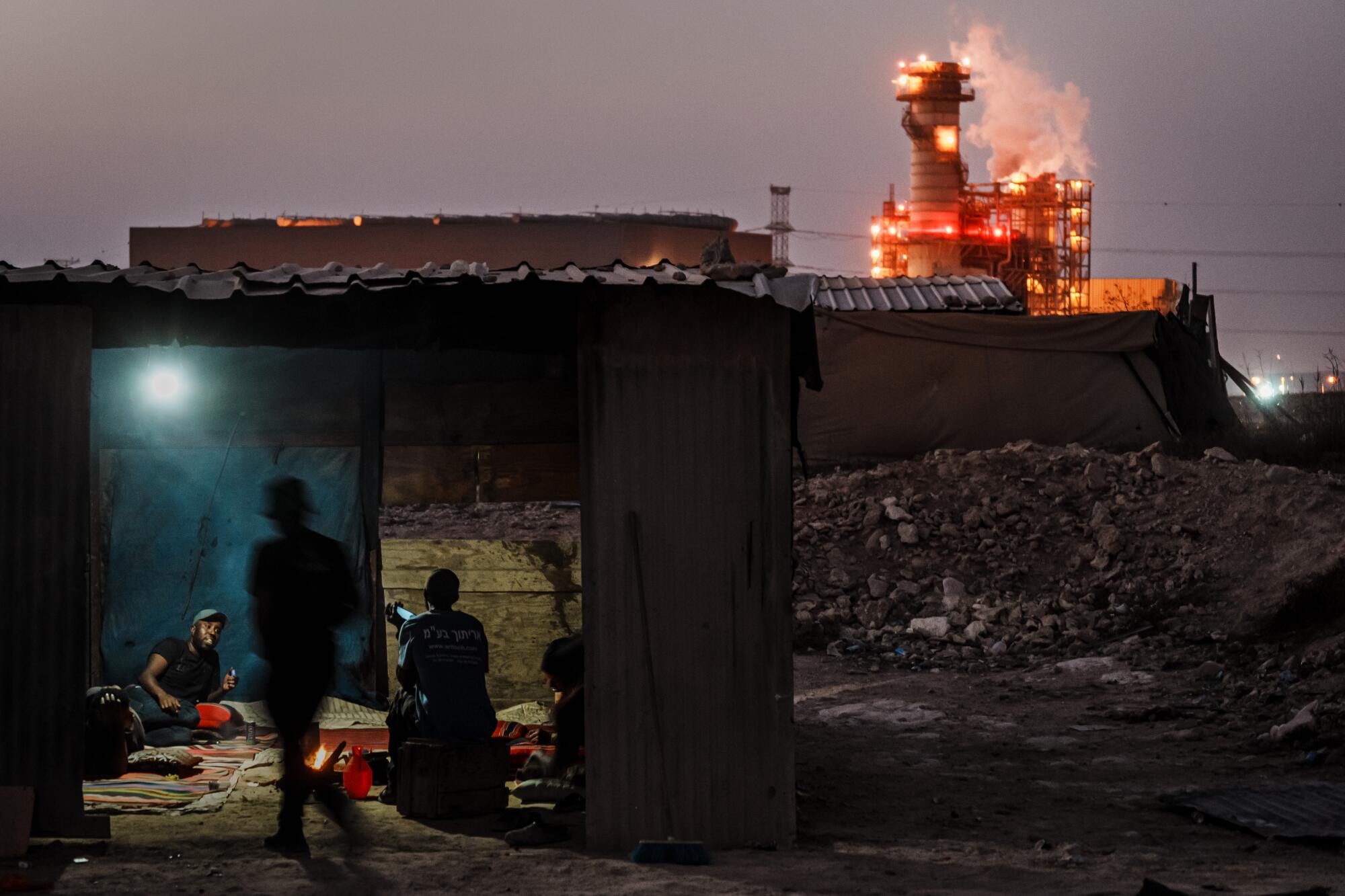
Bedouins of the Negev desert face rockets from Gaza and discrimination and arrest by Israel. They seek safety as the war energizes the far right.
- Share via
AL BAT, Israel — Adel abu Sbayeh heard the F-35 long before he saw it brushing a lazy contrail over the Negev desert, turning west toward Gaza, another warplane from the Nevatim air base not far from his Bedouin village. He wondered if the sky would also bring more Hamas rockets, like the one that killed his loved ones and left him injured and grieving.
“Nevatim has protection, of course,” he said. “We don’t.”
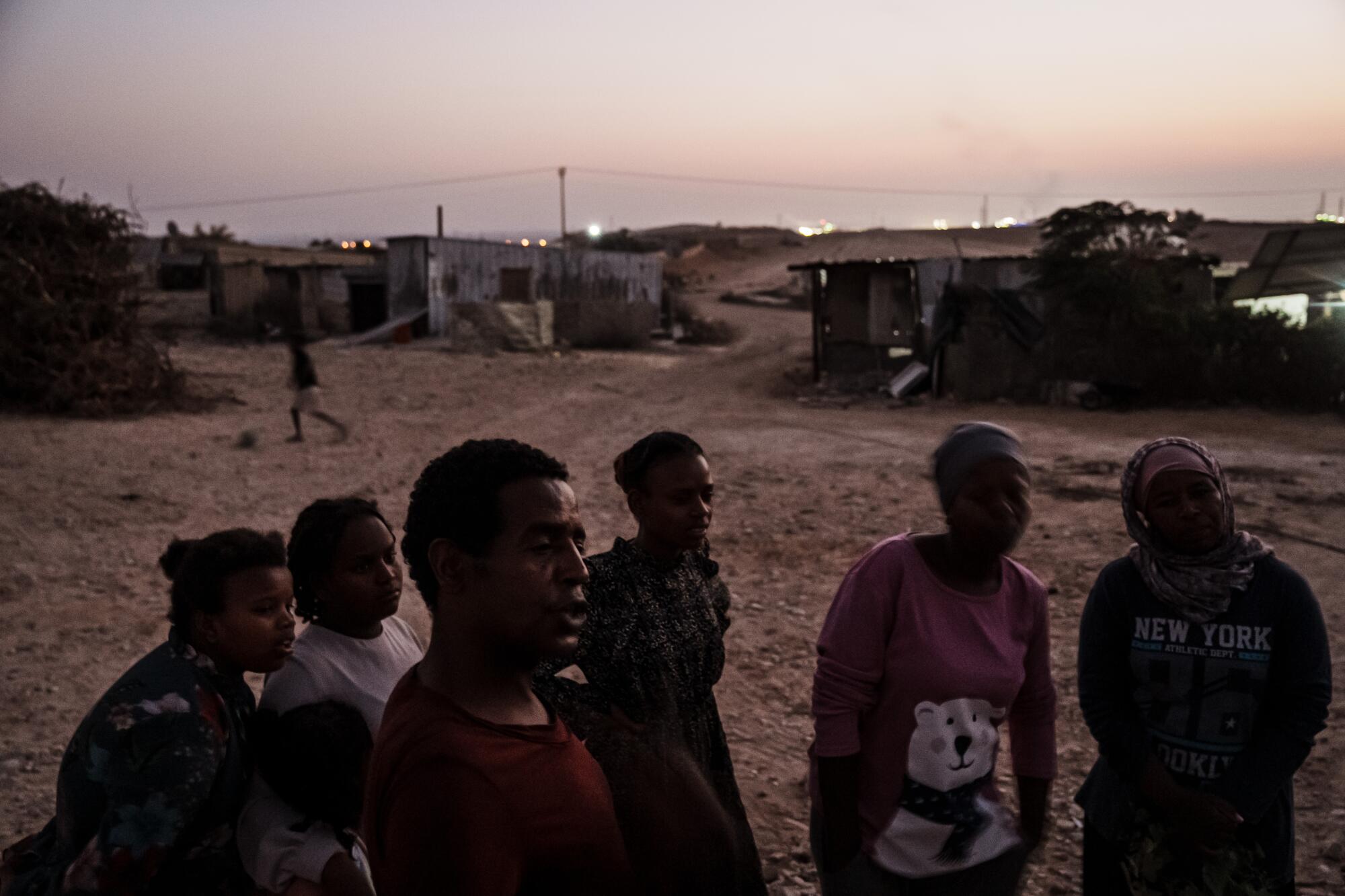
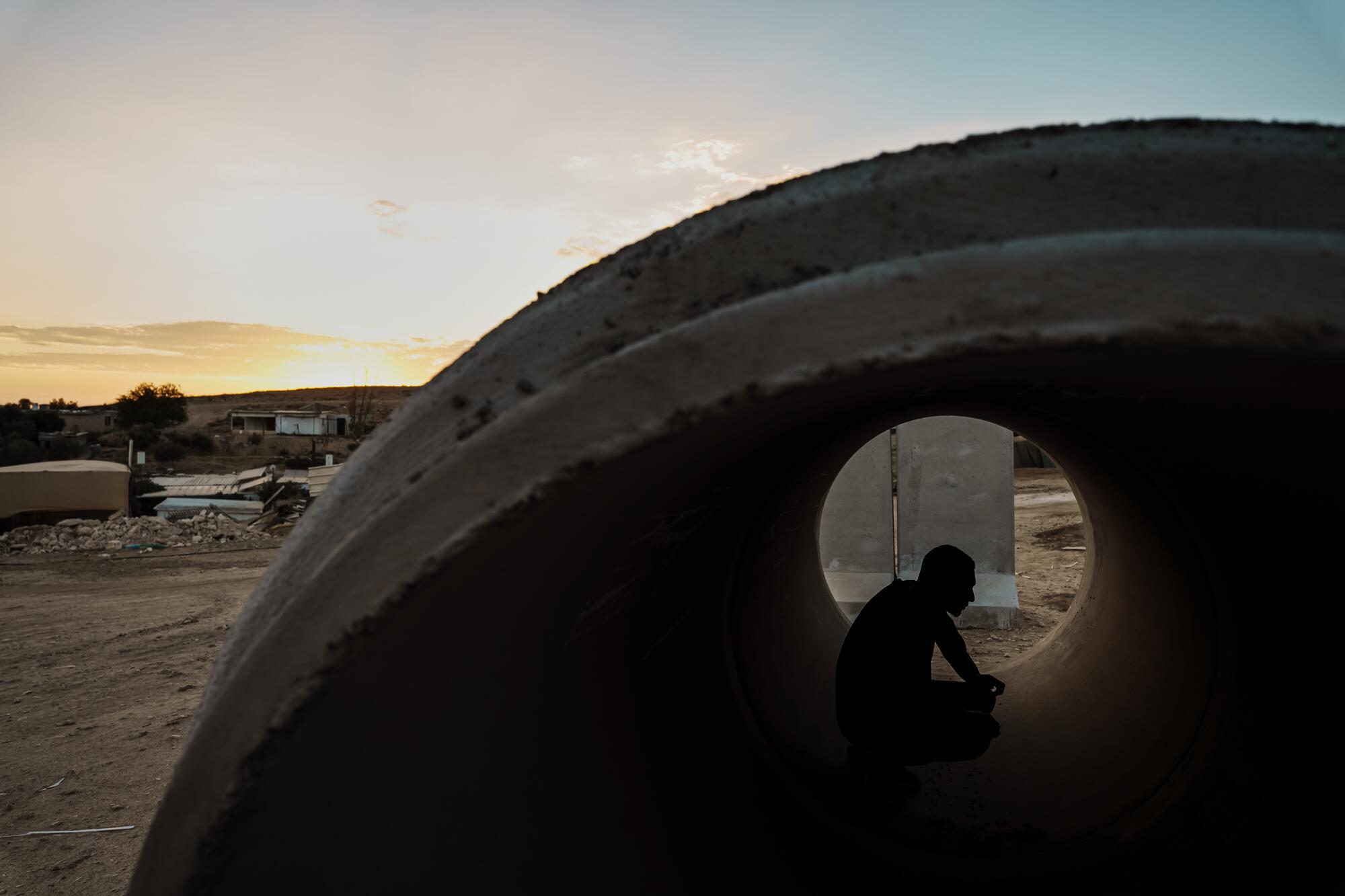
Abu Sbayeh said he believes the rocket was meant for Nevatim, five miles south from where he stood. But on the morning of Oct. 7, as Hamas commandos rampaged through southwestern Israel, the rocket sliced through his corrugated metal roof as his family gathered for breakfast.
When Abu Sbayeh came to, his mother, 57-year-old Faiza, and her 13-year-old granddaughter, May, were dead. Shrapnel had lacerated his back, head and arms.
“You feel horror,” he said, wincing as he gingerly touched the back of his head, still wrapped in thin gauze. “You don’t know if you’re dead or alive.”
Despite the danger from the hail of rockets, neighbors drove Abu Sbayeh to the highway. There aren’t any streets here and ambulances wouldn’t brave the dirt paths leading to his home in this Bedouin village, one of the many tumbledown communities dotting the expanse of the Negev and not recognized by the Israeli government.
The family was lucky it wasn’t worse, Abu Sbayeh said: Moments before the attack, the children had spotted a wild dog and ran outside the house to play with it.
“There aren’t any sirens here to warn us,” said his cousin, 30-year-old Ali abu Sbayeh, frustration edging into his voice as he reclined on a thin mattress in the village’s majlis, the communal meeting area. In front of him a pot of strong coffee warmed amid the embers of a coal brazier. “Even if we did, so what? We don’t have proper shelters.”
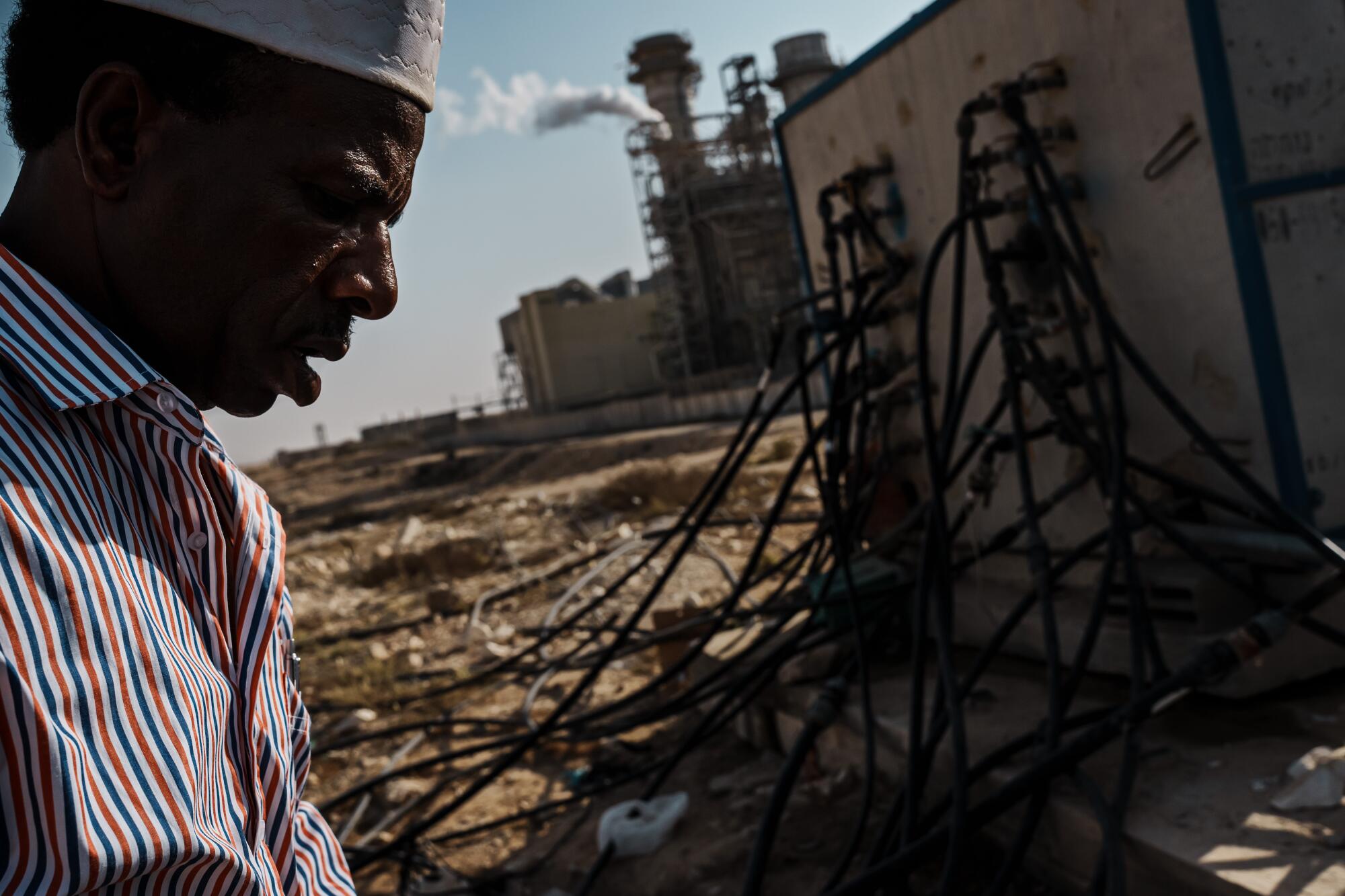
Bedouins have long eked out an existence on the margins of Israeli society, suffering a level of dispossession and official harassment that makes them feel more vulnerable and second-class than other Palestinian citizens of Israel.
Now that the war has energized Israel’s far right and unleashed new levels of anti-Palestinian rhetoric, there is a deepening sense of disenfranchisement among Israel’s 300,000 Bedouin citizens, who make up just over 3% of the population. As they search for a secure place in a wounded nation, they stand on a fault line between Israel and many of the Palestinians — citizens or the occupied — under Israeli rule.
At least 20 Bedouin citizens of Israel were killed Oct. 7 — seven by Hamas’ rockets and the rest when the militant group’s fighters blitzed into farms near the Gaza Strip, apparently paying little heed to whom they were killing. Six other Bedouins were among the more than 240 people kidnapped, and only two of them were released Thursday, the final day of the exchange; the villages have no word on the fate of the rest. Hamas militants killed at least 1,200 people on Oct. 7, Israeli authorities say.
“Bedouin or Jew, we both paid in blood,” said Atta abu Mdeighem, the mayor of Rahat, the largest of seven towns built in the Negev for the Bedouins between 1968 and 1989 as part of the government’s long-running resettlement policy.

Amid it all, Israel continued to issue demolition orders on homes in unrecognized settlements such as Al Bat where many Bedouins live and where any construction is prohibited.
“The Bedouins are being whipped from both sides,” Abu Mdeighem said. “From Hamas in Gaza, and the state.”
Because of the perennial threat of rockets from the Gaza Strip and elsewhere, all structures in Israel, including homes, are required to have shelters. But in Rahat, despite its recognized status, there are only 10 shelters for roughly 80,000 residents; Abu Mdeighem had asked the government for 10 times that number to be built.
In Al Bat, about 20 miles away, charities and companies donated makeshift shelters in the days after Hamas’ attack. Some consisted only of a roughly 20-foot concrete pipe flanked by T-walls, each fitting about a dozen people, and others were made of dirt-filled Hesco barriers arranged in a square open to the sky — either way, little protection, said Abu Sbayeh.
“How are you going to fit all our people in this?” he said, standing near one of the concrete pipes.
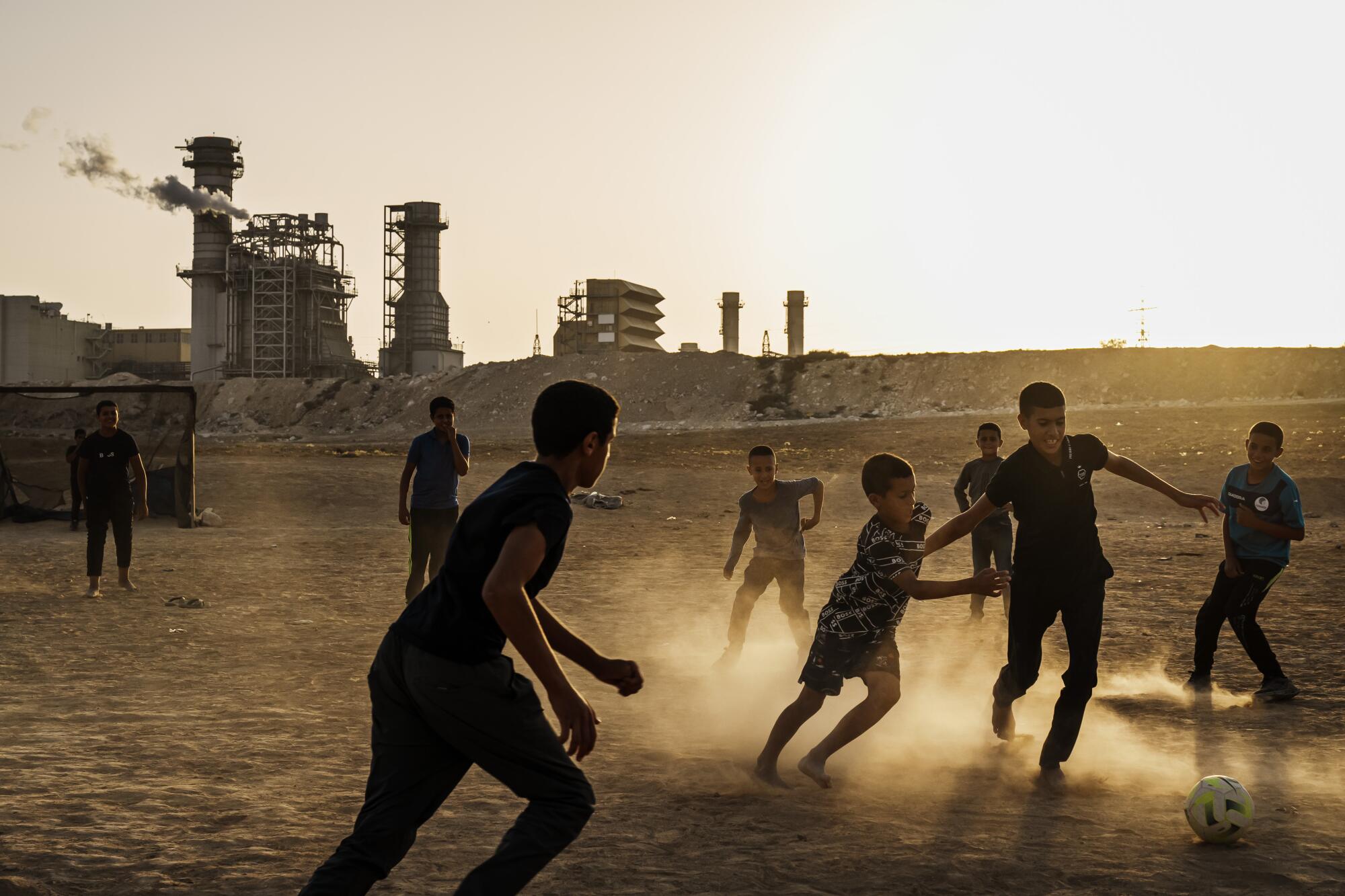
Ibrahim Qeraan — who lost his two sons, Malik, 16, and Jawad, 11, and nephews Amin, 11, and Mohammad, 16, to rocket fire on Oct. 7 — viewed the half-hearted effort in providing shelters as another way to push Bedouins out of their lands.
“I’ve already lost two sons because of their policies, but I won’t leave,” he said.
For centuries, the semi-nomadic Bedouin tribes roamed not just the 4,650-square-mile area of the Negev but also Jordan and the Sinai Peninsula. During the Nakba, or “catastrophe” in Arabic, in which Palestinians were displaced after Israel was founded in 1948, only 11,000 of the 90,000 Bedouins remained, while the rest fled to Jordan and Sinai. Those who stayed were given Israeli citizenship but were corralled into a closed zone under military administration in a small corner of the Negev that became known as the Siyaj — meaning “fence” in Arabic.
The Israeli government later established the seven towns within the Siyaj to encourage resettlement, offering improved infrastructure and legal homes. But many refused to leave their ancestral lands and have long accused the government of pushing Bedouins out with reforestation programs and bans on livestock grazing.
Though authorities relented in 11 cases, 35 such villages — with about 100,000 people in them — remain unrecognized, and have no water, electricity or roads, their residents liable to be forcibly relocated or have their homes demolished at any moment. Bedouin activists say the government demolishes about 2,500 of their structures a year; others accused authorities of deploying drones over unrecognized villages to track any change in structures.

After his home was badly damaged in the rocket strike, Abu Sbayeh said, he had to make repairs in secret. The government had torn down his dwelling once before.
Economically, Bedouins are by far Israel’s most disadvantaged community. They suffer the country’s highest unemployment rate and more than half live in poverty. The situation is worse since Oct. 7 because many toiled on agricultural projects in kibbutzim close to the Gaza perimeter. The Bedouin community routinely faces stereotyping among other Israelis in addition to discrimination and unforgiving policies.

In recent weeks, though, as the Israeli government has aimed to portray a unified front, officials have also made public gestures toward the Bedouins.
They highlighted the heroism of a Bedouin bus driver who saved 30 people when Hamas fighters attacked a rave Oct. 7. And as the death toll from the bombardment of Gaza rose — now more than 15,000 people, according to local health officials — the Israeli government hosted a meeting of tribal leaders to build up support.
Israeli Prime Minister Benjamin Netanyahu visited the military’s Bedouin battalion, commending the troops for “fighting heroically” and “safeguarding our country in an exemplary manner.” (The number of Bedouins in the military is unclear: In 2021, Israel put the number at 600, but Bedouin activists say the number is usually half that, with those who do serve often ostracized by others in the community.)
But at a time when Israelis are vowing to destroy Hamas, the government’s conciliatory rhetoric is overshadowed by a crackdown on speech, with Bedouins — many of whom have family ties extending into Gaza and the West Bank — feeling particularly vulnerable.
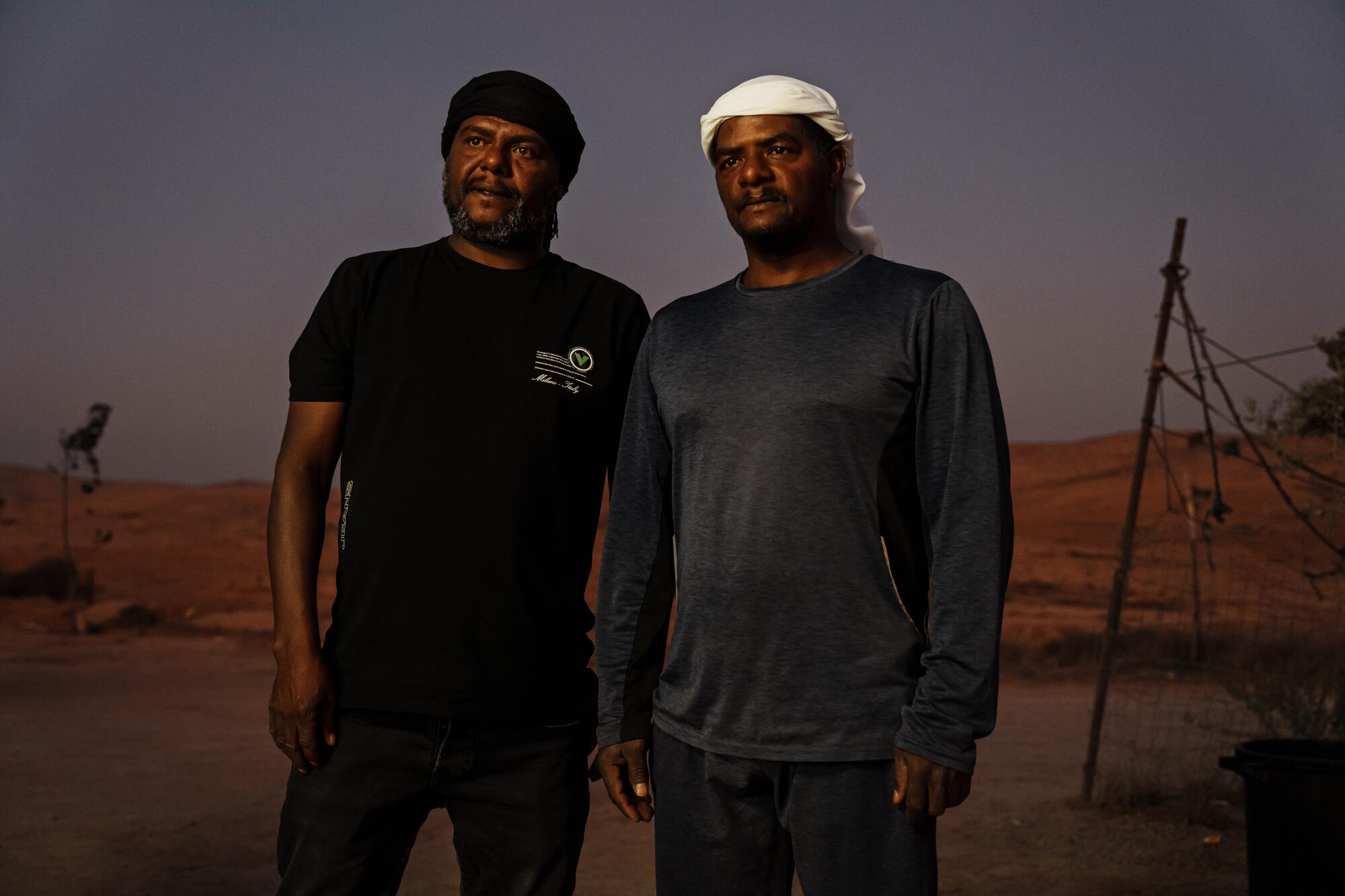
“Say one word out of place — at work, on social media — you’re imprisoned or fired,” said Marwan abu Frieh, a lawyer and researcher with the Haifa-based Adalah legal center. He said more than 50 people in the Bedouin community, including six girls, have been detained for investigation or arrested and charged with “supporting terrorism.”
Bedouin rights activist Huda abu Obaid said the war had intensified feelings of insecurity in the community. She said that police were now posted at the entrances of Jewish villages, searching anyone who looked Arab, and that many Bedouins had stopped going to work. She hadn’t driven to her office in Beersheba city for more than a month.
“On the streets, there’s fear,” she said.
Other Bedouins view the mass displacement of Gaza residents and the calls from some Israelis to move Palestinian populations to neighboring countries as a warning, or a prelude.
“If the aim of the war in Gaza — as some politicians say — is to do a second nakba against Palestinians across the country, then the group most vulnerable to this after Gazans are the Bedouins of the Negev,” said Aamer Hzayel, a Rahat-based researcher and academic who was arrested last month over a Facebook post analyzing Israel’s options in the war and that authorities said supported terrorism. He has since been released, but the case remains open.
Khalil Alamour, 58, a retired math teacher and Bedouin rights activist from the unrecognized village of Alsira, agreed.
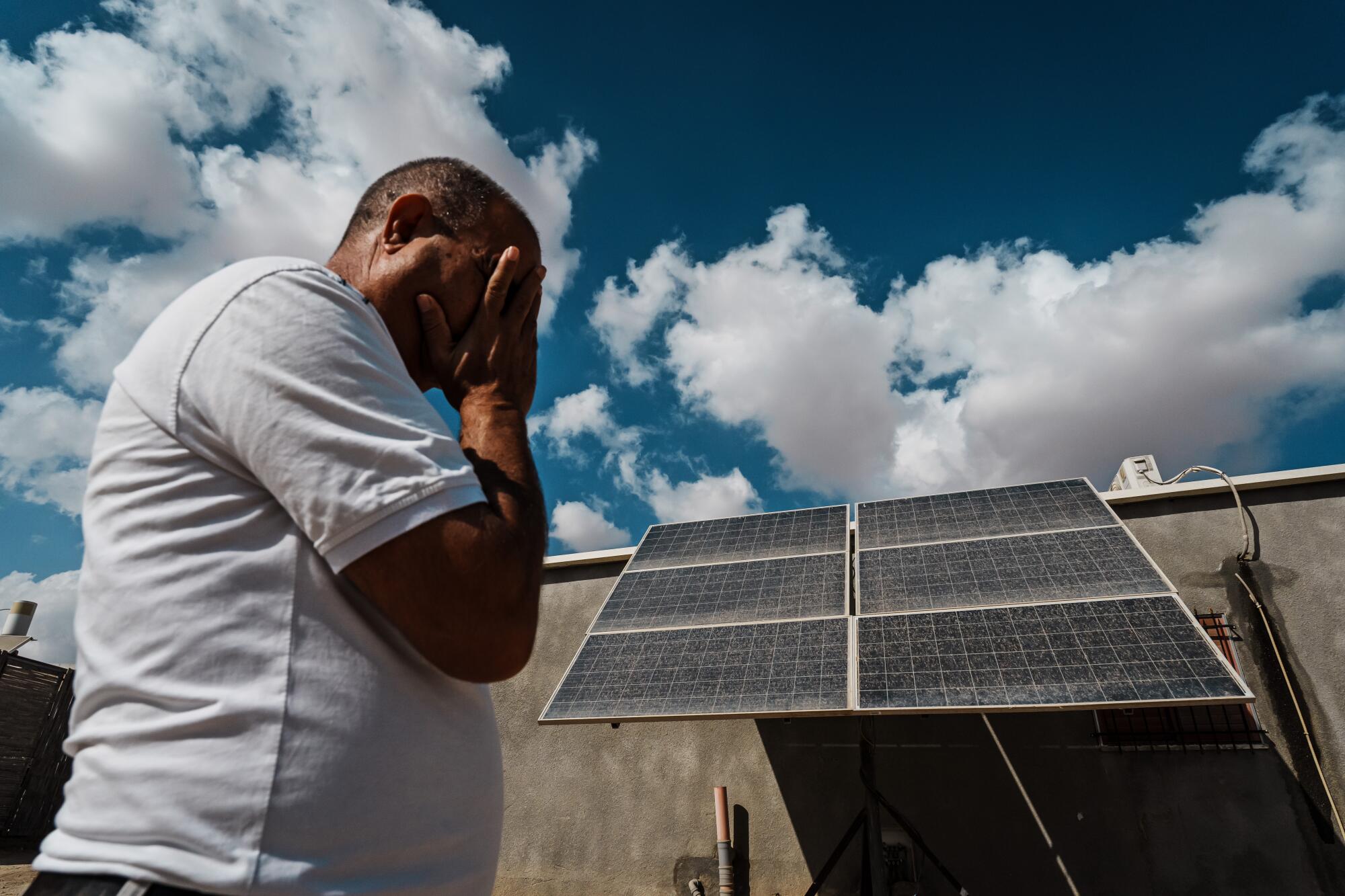
“We already had a racist government before the war, with people like [Itamar] Ben-Gvir leading the campaign against us,” he said, referring to the far-right, pro-settler politician with the ultranationalist Jewish Power party who serves as Netanyahu’s national security minister.
Before Oct. 7, Netanyahu’s right-wing government had already supercharged the confiscation of land and livestock, restricting expansion of Bedouin communities and uprooting others, demolishing homes.
“But now it’s taken a new, more extreme direction, and it’s gaining momentum,” Alamour said. “They feel they have an excuse, they have legitimacy.”
Perhaps nowhere is that frustration felt more acutely than in Wadi al Naam, the largest unrecognized Bedouin settlement, home to as many as 15,000 people. Just outside Beersheba, the collection of dilapidated, low-slung buildings — many built using little more than cement and metal sheets — is scattered around the Ramat Hovav power plant. But its illegal status means it’s cut off from the electrical grid.
“Not even a kilowatt they gave us,” said Yusef Zayadeen, who heads the local council in Wadi al Naam, whose name means “Valley of Blessings.”
He walked to a makeshift patio by his house — a bit of yard, a plastic table, a metal umbrella — and turned on the TV to watch Al Jazeera news and the footage of carnage from Gaza.
Moments later, he answered a phone call. Another relative — someone named Shadi — had just been killed in an airstrike near Rafah, in Gaza. He started checking in on other family members — who had been wounded? who had been killed? — among relatives living in different areas of the enclave.
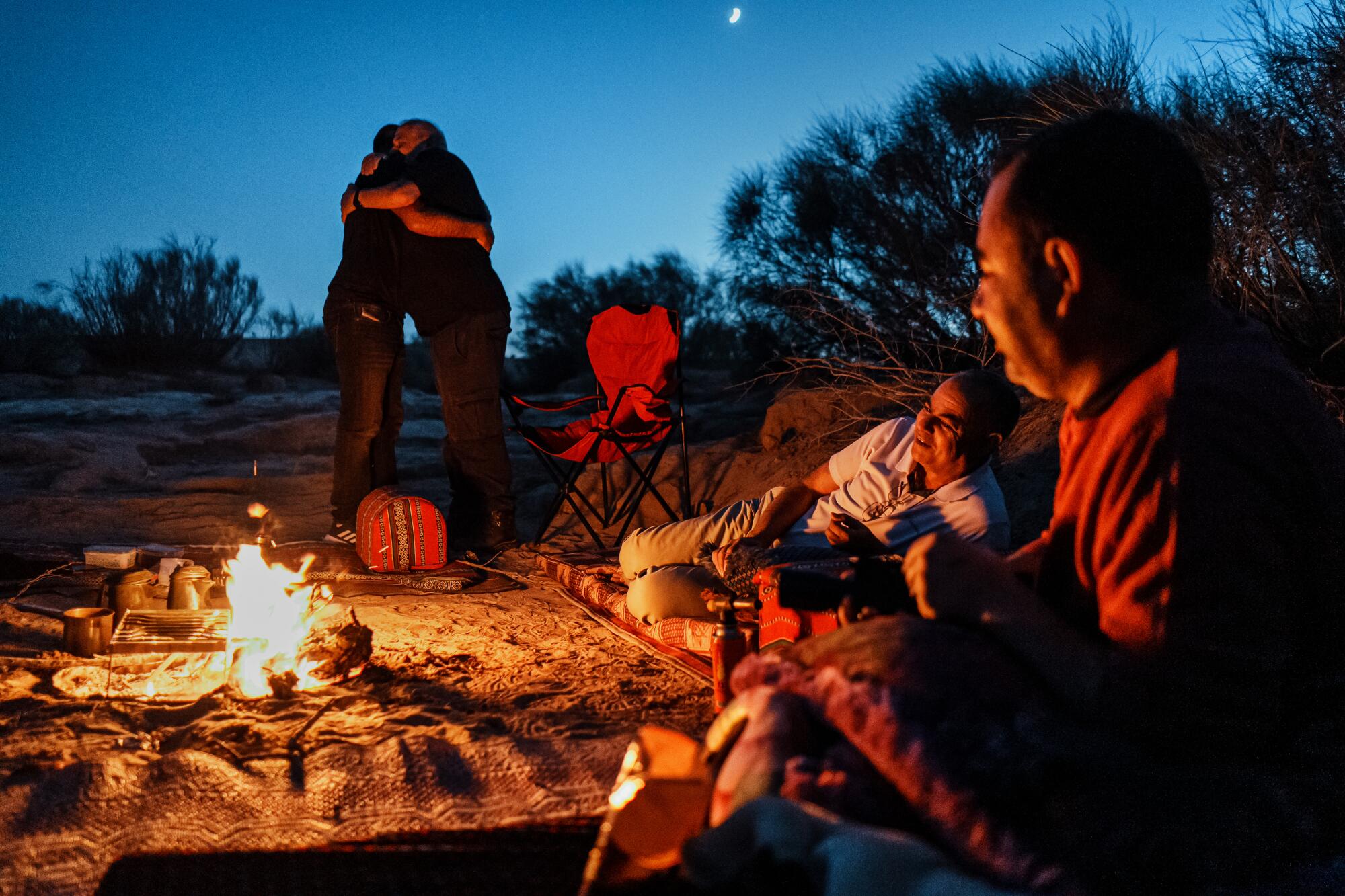
“See? We’re all one network,” he said. “Us Palestinians, we’re scattered.”
A longtime advocate for increased Bedouin rights, he saw little room for optimism. Over the years, in his village he has hosted ambassadors, emissaries of aid organizations, Israeli officials. None of it helped advance Wadi al Naam’s cause. And now it would be worse.
“It’s at the point where people can’t say anything even when the authorities are destroying their house over their heads,” he said.
He looked down the hill, where a group of children played soccer in the last hours before sunset. Above them, an F-35 rumbled through the sky, its contrails turning rose-gold against the sun. The children paid it no attention.
More to Read
Sign up for Essential California
The most important California stories and recommendations in your inbox every morning.
You may occasionally receive promotional content from the Los Angeles Times.















